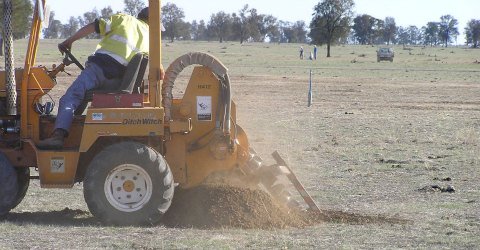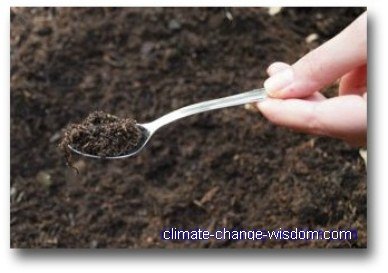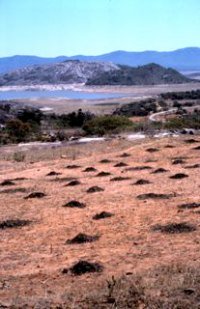Home | About CCW | Contact Us | Climate change Meaning | Causes | Solutions | Emissions | Carbon trading
Soil and climate change
Soil and climate change are linked.
Soil contains four times more carbon than the atmosphere, some 2,300 Gt, the bulk put there by biological processes.
It is both a sink and a source of carbon, and in the absence of human activity, annual exchanges with the atmosphere would be roughly at equilibrium.
Carbon that plants sequester through the process of photosynthesis is transferred to soil as
- root exudates, carbon rich materials that stimulate microbial activity that helps release the nutrients plants need for growth
- the roots themselves that die and decompose to carbon compounds
- leaves and branches that fall onto the soil surface and mixed into the soil layers by the action of soil animals
Where it forms a food source used by bacteria, fungi and a host of soil animals that themselves create complex food webs, each organism using up some carbon in its own metabolism and releasing it as CO2 back to the atmosphere.
This essential process we call decomposition.
Without decomposition the plants would soon choke in a rising tide of leaf litter, yet the importance of soil in the global carbon cycle is often ignored.

The carbon stored and transferred through soil has a huge role to play in anthropogenic climate change for two reasons:
- the soil carbon pool is one that humans can directly manage - unlike some of the greenhouse gas emissions, soil carbon is something we can increase
- what happens to soil carbon will affect the level and efficiency of any adaptation - soil managed to increase carbon levels has many co-benefits for agricultural production and environmental services
Get soil management wrong and carbon is released to the atmosphere. As much as 136 Gt in the 140 years prior to 1998 came from land clearing, compared to 270 Gt from fossil fuel use. Land clearing still accounts for roughly 13% of annual global greenhouse gas emissions.
But get soil management right and it will sequester and store carbon for as long as vegetation cover is retained.
Soil and climate change may seem far apart but what we do with soil over the next 50 years will either help or hinder any climate mitigation effort.

Enhancing biosequestration of carbon into soil gives it:
- more efficient nutrient exchange and storage
- water holding
- more life
- resists disturbance and extremes
All far more efficiently and consistently that soil depleted in carbon. This is one of the main reasons why organic farming works without the need for inorganic fertilizers.
Soil managed to retain carbon close to its capacity will be productive and adaptive when climate changes. The sequestration potential of degraded soils is a cost-effective way to generate carbon offsets (net carbon sinks) and the potential volume is significant.
It would make sense to put soil carbon management at the top of the list of climate change adaptation options.
Soil and climate change needs our attention.
Back to top of Soil and climate change | Return from Soil and climate change to Agriculture climate change | Back to Climate Change Wisdom homepage

Recent Articles
-
Reducing emissions while looking for solutions...
Nov 01, 15 04:46 PM
I've seen a lot of post's online for ideas on reducing emissions. The one suggestion I have not seen, is the most obvious. There should be a government -
Climate change evidence
Mar 24, 15 06:22 AM
Real climate change evidence has to demonstrate a change in climate. An extra sunny day or a severe storm or a flood is not enough. -
The climate change effect
Feb 19, 15 03:08 AM
What will be the climate change effect? There isn't one, there are many. Perhaps too many for us to understand.

New! Comments
Have your say about what you just read! Leave me a comment in the box below.